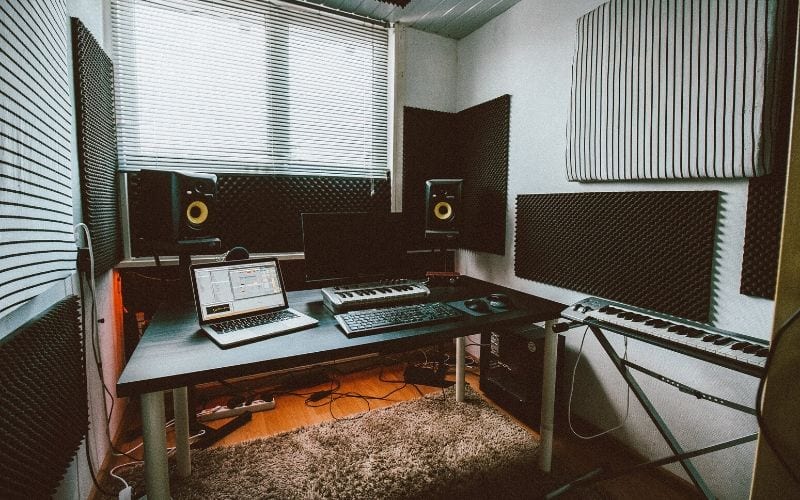
Soundproofing a room can be a challenging task. Whether you’re making your own studio, or just blocking out the noise from your teenage kid, making the soundproof room might take some time. Here are five things that need to consider that can help you create a quieter rehearsal space and bring peace of mind to friends and family.
You can get the most expensive recording gear in the market and your audience would still be able to tell if you recorded in an environment that’s not conducive for working with sound. Luckily, good sound blocking also means you can keep your noise in and avoid disturbing your neighbours.
So how to soundproof a room for music works? Read this entire article to know about the four methods of soundproofing and how to apply them.
Adding Mass
The basic method for soundproofing is to increase the number of materials within the boundaries of the room. This will make your waller thicker and denser, so it can’t easily be vibrated by sound wave energy. While singing if you’re sound hits a dense barrier, it’ll either be reflected, be absorbed into the mass, or both. Here are some examples that you can add mass to your room surfaces.
1. Build a Thicker Wall
If you’re building a wall from scratch, choose thicker drywall that can absorb more sound. You can also add a sheet block or sound isolation barrier on the side of the drywall to add an extra layer.
- Use the sheet block on the outside of the wall and cover them with another layer of drywall.
- Build a simple wall frame, attach it to the wall surface, anchor it to existing studs, cover it with another layer of drywall, and repaint it.
2. Apply Wall Padding
After creating a denser wall, you can improve the soundproofing by installing absorbent panels or foam mats that soften noise within the room while also absorbing noise from the outside. This includes 12*12 acoustic wedge-style wall panels that absorb both low and high frequencies. These panels are designed to provide a controlled response to sound, which ensures that you don’t end up with an audial deadened environment. Hence, the best results, invest in panels that have a fibreglass core, as these have high sound absorption ratings, are highly durable, and it’s easy to clean.
3. Damping noise and vibration
Even with heavy surfaces, you may not be able to vibrate completely, especially in the bass region. These kinds of vibrations often travel along with the wooden frame around the room, along the drywalls, and up your mic stands, and end up with disturbances in your recordings even with microphones.
Moisten help dissipate and slow down these vibrations, On the other hand, it touches and applying light pressure to a vibrating object will lessen the vibration or stop it altogether.
4. Use acoustical glue
It is also known as acoustical glue, specially designed elastic sealant can be applied when building your wall frames and installing drywalls. It’s known to be the most effective tool for damping noise in a room. As long as you use enough of it, it’ll hold materials together while absorbing bass vibrations. You can use normal caulk to fill those small cracks, gaps, and seams in and around the walls and windows to maximize your soundproofing.
5. Decoupling structures and equipment
Image via Shutterstock Decoupling is simply the isolation of your wall surfaces and equipment from other boundaries of your room, from where vibrations will normally be transmitted. When you don’t have the option of tearing down your walls or building a new one to add insulation and soundproofing materials, this is definitely a favourable option.
Conclusion- Now we hope you got your answer regarding how to soundproof a room for music. And if you’re searching for the best home theatre speakers then you’re in the right place, you’ll get multiple options on our website.
Source URL:https://www.audioegghead.com/how-to-soundproof-a-room/

